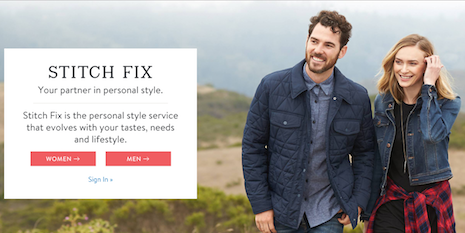By Ana Andjelic
The intersection between fashion and technology is hot. But beyond high-end fashion brands becoming more comfortable with ecommerce and cautiously developing their social media, content and mobile strategies, technology is still used as something of a gimmick.
Similarly, startups wanting to target the fashion industry have a ton of fascinating ideas and a clear focus on service and utility, but they lack connections and the mastery of the luxury fashion language.
The result is that there are only a few brands that have managed to capture the space where technology and fashion meet. Think Reformation, Everlane, Re/Done, ShopStyle or Spring. For everyone else, this intersection has yet to reach its full potential.
The first step in this process is to know what is out there. For investors, legacy brands and everyone in between, here are the areas to which they should be paying attention:
Data and analytics. Trendalytics is a merchandise intelligence platform that surfaces what consumers are shopping for by triangulating information across social media, online searches and SKU data.
Results can be segmented by the product category, classification and SKU level to help retailers with merchandising, pricing and marketing activities.
SKU IQ links in real-time point-of-sale and ecommerce to a single SKU IQ to unify inventory, sales and customers from all channels.
42 Technologies was created with the ambition to make big data more understandable and manageable for global retailers.
Through data reports, custom investment recommendations, performance tracking, best-selling recommendations and identifying most valuable customers, 42 Technologies makes retail data a bit more friendly and useful.
Tribe Dynamics links digital marketing programs with their ROI. Through performance benchmarking, proprietary data and analytics, influencer identification and relationship management, Tribe Dynamics makes retailers’ marketing actions count.
Micro-influence. There is such a thing as having too big of a reach.
Brands are increasingly gravitating towards almost-famous, up-and-coming Instagram and Snapchat talent, wanting their focused, highly engaged audience.
As more marketers get tired of overstretched online celebrities, companies such as Speakr help them identify not the most obvious but the right influencers for their brand.
Speakrs, as the company’s network of influencers is called, are a meticulously selected group of content creators and curators with an impressive variety of interests, demographics and psychographics.
In addition to this collective, Speakr also optimizes brands’ campaigns in real-time for greater results.
Personal shopping and styling services. There are a lot of people who cannot or would not endlessly scroll through the mass of products on their phones or online.
In fact, there are enough of them that personal stylists services have become the competitive advantage of global retailers such as Selfridges, Saks Fifth Avenue or Net-A-Porter.
Startups were quick to take notice.
Ok My Outfit is the exclusive shopping service where professional stylists meet their customers in person with clothes and accessories that fit their style, budget and existing wardrobe.
Bespoke Post gives a unique and limited edition angle to the subscription boxes.
Stitch Fix, an digital personal shopping pioneer, has done so well that it is now valued at $300 million and is expanding into menswear. The company’s competitive edge is in its use of fit and style data to evolve personal style suggestions with customer’s tastes, needs and lifestyle.
 All stitched up?
All stitched up?
Direct-to-consumer. In addition to clothes as unique as you are, AYR created a smart “Try It On”
With it, AYR lets you order as many things you like for a dollar each. You can then try them at home, return those that you do not want and get your dollars back.
Los Angeles-based women’s apparel company Reformation already has something like a cult following, earned with Yael Aflalo’s focus on sustainability, recycled materials and much coveted styles.
A newcomer Re/Done has already captured the audience obsessed with custom-cut vintage jeans.
Greats does for high-end sneakers what Parachute does for bedding: makes custom, high-end, high-quality products.
La Ligne is a brainchild of former Vogue editors Valerie Boster and Meredith Melling, and rag & bone’s former head of business development, Molly Howard. It is focused on a simple belief of the universal appeal of the stripe, and translates it into an all-stripes collection that is as simple as it is appealing.
Retail marketplaces. Secondary marketplaces are not new. But those who define the category make market transactions quick, simple and automated.
Tradesy is a great example, as is the Material Wrld. The latter built its business around the same logic as Rent-the-Runway: consumers do not need a purchase – they need clothes.
It the purest form of conscious consumption. Material Wrld latter allows customers to trade items they got tired of wearing for something completely new – ad infinitum.
 Ana Andjelic
Ana Andjelic
Ana Andjelic is senior vice president and global strategy director at Havas LuxHub, New York. Reach her at [email protected].
{"ct":"v5NAs2XLUC9aDLuJb4eEpMvN\/\/g+qT3K1j0uwXl+MJouWeVEf6wvN+H6GjUeFh3kDzKHNf7SETYQK4p1cI8nfX1tQp8G2IhV0c0koZ9tfQF+i+U4jhbx4r556g7fphZWaHbLg93NrEFY\/ake3WajnCXR6qhNKUts+vvIUll03Jd0WToXygT4b23LOKxHIHL2ToW5YT0KS5qvtroZ7LTLvHyELUHbHWmUZpMK0hlMVi2YPKaELdUijNSlBwuT0HF2V8m2erngsfrvFE\/3BtgQPVSv4P5bybEP8hgCZS\/+sstPRCoOD8DWVK3AWyu\/xkDhhKaAsdNKOnfxAQySzhGcB8W2k+LM4joq\/CMxlN6nVNWJQD4sLBLsWA+prl9AFXykixdTQuP4IxNNQiZ4w5vwGlJBkubU4ODcscbhHVdq+myAkncN7Z6BbJJWrZpsf76H5J56hfXUqpbsr\/\/BmfPaYcZ+fms+jjrqbCTbSNK\/+Gjn2AXObBWbkhWa3GnF9F\/BrKMTv2qwEgfREp6QbOSpnnPuEoIGKHujkk5S0RLsAqGs9jiTT\/Vw8sPLZZX62wwHBGK5dmu8yxRiE7OgRj1wwK7ES1xjVrpEkdIUs+oVkWmADrq46gd7VqwH0va6IHNTPhC3JO9XtwLWybVidcrR9xMmdIccIlAhql1XkLOyOdIr9Ou6N1E9NUIVkLtuQsLulO807NHqk3obojgWtZr2gH4Kq9DehThFGeSjDv\/AXNt4PAZAGtD+rGlmMQE3\/SulBOVjqZNTryDvpEanvbXjBOCdtpjGSlqcj1Lru5cQLi7gLDvx8kLDnzHOMUpLtFWRQaID\/Lu30YpNJspidmnORuYG+10eYBNh2n0X1+9jfXqw1k+\/6CWhlnfemawOZjbKSA0Pt8euoULj97wGJ6E1Vsrt3XfbYOvAlbVy+RbLKdui84Vr7iu+3\/AQjpbu+I2MCdY7rty7erq+luuT1xqQvh\/z742VD9JxPavCt7igUS7Nc3ATuGZasAbdiF8mS9\/3DrpQhIpI0cSLQzWPM87aBKDN01pvK0tqpdgbvgjKRD3Rg\/rt3ZI0yVmAM2Y\/SgsIM00oihxEagvd0yqIHjsxr1swYKsGL73KwILBlyE6\/8XAk1qxXxxbnlie6g9lyXjltjz\/kevKgKXvWNTi5Btp5aE1Cq2YZeOtmJsga9mGtxT9U25tvzVf9QaFRcXDNygfxBhAyfW8xcrut6\/md3lhOyb8J180C93nO4pcdMdqRG4+9ir93gKpQex6p9IjmtbAw9xx9pC\/1At\/TZj3zHO5zUIhSklM\/TMlckWzICox2tcbo0nZseDS7Rkx3z3d9YI8hXtIU+kolu2AU\/7LOVTmbDie6o9FIJvZ2GTjTzBAIP\/CUZD4tUoKOlXZ\/MCncgNjAmbegeEkBzxWCiJs0\/8qUcN\/7ud7olevn0dPmhjDfe9OsuqhUGPf6GRtt7sI4R\/VtNyPJsmTqc46ZCmxaeBAmPXxVY9Qa\/7esm+0jrp3uvch2fHgInjzyKD8so1l\/17KwTMy5p5gsVT2CwDWoaGUKTxFU74SCS2tEA+RS3C1IczTAULXMeps28yH3d+MHPZUNIMiUaBthv\/wOLKrMjHAK16Bi70jYYIonihfMwIrsMARwZoTDTSvvkpG7Likb1E2DtgNB1IUQeKv5pxcMt68ZVd+yaeHgBtrW5m1+OZ2vYOWmlC8VLubhLJKNzR2omF6B0LAs2UX25vTNS5tnr2Hzb\/71B4uWHHye+pLtva2T8B90QyERqgz74MaiSHgyWhluL1sUj\/dfMZ\/vyNzU9oDV3YlFvAfmwXLGcnISFiDZ3CWJkF6SHY4b\/Y\/KmVWwQQ6SGhulV1Hh0O5ocJUDFdqdDWD8NXsL\/vmMnr8\/UKOtxj4OB88siqeLyFCnqJ3SxWmyqm5io1v4SpDej7SnDFgl4WEpGhNE\/aw7FsjMECUrnOgmRFpnJe484axbDUF7UHihjBCz3Ml9oODYHWmXeixfvx91zVi\/4BGI6Q+K8uZc2zhXt7BiL27GDmM1693KFwgGgbggFc3RiR5Tr2P6oIXyACbYIVWeYwvGWs3NsNvPEPFfDyHgJvzxrniwGtMoW6FYgu6164aiy4p4g\/zHYspPOp2qbgmuQwHD9qRDI1yibHrte7I7hNA\/Hv+JiVFhKy9wV7bla9xzWqZ\/1KsdpjRtASTXTSyd9Jnn1AkAysr9kZX1nqJNmm8cw0ZcBgAb32s6aPy6U4NGvvtdNWvX6xaTbhNs2X3koR+PlSGc5lmT4pMR1ue0He8iAYbqdWPhCDxyzxXVLuy0CTpen5LsbovwyQOtGoVc26nrdOCn2N63ELQqG5+CwsMQqpzKDnXo8D59u+ZnOYnCxaZ1QuetYLA4815dWJ+0RMs3ohT6WZKVJftYtGrLIIXFww7\/XQKurjFmlvxcp52sn2IocptkAsxFAtUfS3CPxJf96\/dTbT41Jcu1H3PGu\/NAMsQ1+yW\/XERCwEyqlOKW0bcGnu5zwGJww3OUTUssCSGdUZ1IYY+XcdXCiN0H3yegHbzB0Z693oR97TlInlDPITIemcz+ZEOCbr6mf9aw2A9oFE41bxY2PRjZt0lQaQUo6eeuEND32vZSB\/w\/wJckKpuYFCDLgTu8q6eZSdCpvoqbYYWrU9E\/3u8fOl7\/ZNRYe61xb3h6boRHItzib9IOPvd9tpxrV335yXKdrVDxc5lSgaG48+bsTbyR39p2biEYzFCwAvQGY64fWywaMlj9wEbl9j6XbfhIHU0LlN9xZg2K01GmtBNS+crWIMPZgLN1c04GodxDPw6kqBpIDjjpklZkb4mvlWbcX1ggJ9lgEys6BUzJGsrKfhKXjbu289qUGHVbKQYljiPgU3HZmNWN0rjbJsmeXP6pyNb0+o1Ir34jDWkQTZAgbnaEDcbZ1NxWIWryNang50CiMazNPnYzZ6NWeLeM5+YCcT2xAMh5\/gqbBHA1fVV385tsX2k0RC9j9NzB3sR9qC+wLUhCr6QjkCul6m2B5U7kGQ0CLwMabEK\/3xRivvgbmkNdqwC5K8mXwZ85Zw5XQO1pWkiQSXdB7fOguwCjRgcWe1gNvlXoeWaMtlrL\/lXK7EoBhNm7MrIzsaZ3xrrfQoXHDJ7kxB97szP\/RKIha8RoQONv25\/KMo+WXho7Lq5VQLjlvfFtx6mK7DytsuI0WN4gDpMOXMC0e0zY2MjdwI9loCwq8pCY6iXsD2+qoRFqkgtfBjc3Iyh\/JSI44RoDvpSrA\/Sf+YNLAXxEkXhjZJ+s9V\/Rb66nXyWiulIiIbWTFbhMWwD51Tg9GGPeqS7TFfeT1D2H4XuJG1cU3TwprLcnYCfm7pszB1eGc26VfpGcyhaDdoPZd\/XRG+0wujcJxIU5RpKaWhh6Rs3rTxQJ3bRLZcxKZT7Um5MqKcYq\/R\/rcVDEXOUJYCQvUnbs7OOV5jYbehWZ\/OB+5v+Gn0XFEXO44K8JQNdVUp4Zv0v+xDrlodWdEIQhCLMMffdeDGccvghathjfCVXcTnDgOMJYo+6cuODRLNfodn87lDCEwIklUAYchVb9TCM3h0fw2Aj+u211JAqLSF5Id3iaW5tX+g4d6jQ5LxtQfjPWPycorG\/cY3JejH4gH6haexOQ9kAupxMm27rWRqb7DstvYfYs+0vZ4LwMB7MEAjYKT9i3HT2IvRqrlhP7gerT7hWNYUAaAw44PPQ+FL4+GPTqOySZkaLkwwcw8hx8Bm6iq2UmVmQTkGh7hYhfLbIjnNg2PROW0T2obxtIxEi\/lg+mB526fWfcgbEwQgK8XExSqba1kYP7lpBX2B1ajbNkauWTBo453J8KK2+nWC19ijYlfp3SYCdOz60vw3bJEpsSZEYg8fETk6lNmzZFPJbNsY6ZGNikqvlCEbvLKNLea826urDb8NcAH9u86O2gjYDPtR8EezYfDJTqzmgbz9sWVo8zySzLckNVlelKMbthHfe8AKcKt61yZVDyRZMtnCsxW5jLSoGKAtD+U6BS\/EWnz4EEFz7vBC8\/cuG99KOqPiR\/\/lT9R6BVdFtxiU0lWlYKNjWQyQkrZGkQ1F0BOnnhs3YtFwsYtAxJMiGN0cBgWdWkTNAjRiPeCTib4CYLVC36yhBhUnflJ9TWcRZLfo7XB+U8Ty3MDBhTmnzHp965vDwkulyW1q0meQ5cd2Bh7cocYNSsnSQ\/vTvmrQTK9hLdzi6fX1tleV2B798C16of7PsyJeBHwy0r5pRpOWklI4wK8huIvt\/gEI8rbJYKtigc9K0gk9TtIuYbcjtUbVgOI21LoZE7X9AvDJetpiMofDuuLAjPrKwkTCnkE5iuuNhNCFvKzitGF2A7APEUuKY8+S94vxT\/qjdVQhQKpeVonHE+fNRqIuX60YVRNfb\/9yvDoMv79EgOlLaGekW3jLzg1eYbtxiBtWcuLqg78xcTbCJf3kNRPu0sT37+Qtb5TsYx4TOWOrCY8tEaQZguzikq+4G93xpEE361BOK4rA9kKNblM7KNmFIr8s2ee+u6RffVF2yWY3fo02fR6rQTZR7V3SBavyfIVPmS8aJfubPcYlBw\/swRqHbbEeh838wK6sPobYsaXDMZQFaU26Egkz8Pl2hYRY3VNEwgVxEUD4JlMT2dSj7fhF25Ew0p4cuXcFpw\/xP\/IW0riPUVpo1Qqqf3I+o8sX8d00KNORVJt9Qj43SkfPcX6KhBJBH2WH\/eL\/1pielNUW36c1ioZvknLZlFRxqGixmSWF2Z7YtrSBBDrMiL8lNH1nAueFQDiaIg45KqotMMw7tM3CDJ2i0GqjA95cWEyN112lxc1+WyU\/x2MY64C1YPbjoXIxHWsm94AiLtKlj7MPnbua0lGErmVfhPMFo7qA29R9POa9IvBR3cz77LOFeGESEqZx6yDagXWKLYrS\/oTYiV998ckEG4Cvn5F1GWEOADYu\/VpX1moZvlCYdSAuuec4o5W5Sjw6UOUc68s8eGHT1\/FgiH5ZeRlHox55oUBJgPsUBy2ntvPz1YdMc2EBx8tbn87aJuf8bybYAGBZMHJ9Myg8PW\/AUyqaNe6hhQa6nfIQymno7aBhvwromGj8Xssye3D19psgKVga5tkvLkmqLfvQgYy8BkJTDszDqj5w1mPdxfKyEmA+TBsFk9Tc8\/pPKAi2QWDQ\/VZbq5AOtEdWCIQRxq3fzhCy2XN0IDhQUtxRfKLR5WISJM8u7aG5\/5VP1v96Ylp26LPTZN2wE3FQDMfWqvuDbA5Y9Q\/RsnAilhWHgmrsNKhO9HcHvvZgMBCKd0uLQ+HumRrwsK\/fkRhVcAKU82fylcOAzZEnQTpp7hpTzlfb5HiepgeR6afM\/dZ53D3a\/AbWJta7JnMA0uMfAcUtHQZ6iB2qp6uQL3Bor6ngw\/UaoDozf0JvRB2vdopTEi33glgjRnPkuLaSq9Stj1\/3ibtGbelwpvl8TjgQDt8F9zowLO5YZRQaH9+55g21POmUtDPxMvzSzjCa\/+PZPvCaHfWm5hRDJ9jL2RFdusR23XU1CXny9fjzdNkfVnoLl7xadGhHXi2rTXAg3hmBoG\/z6djpknKBKmWepq+42p1+gJ\/rTUAUP6vJNcv8Y\/X5BoNsy++ulcbflvNkTUtethVlRnbBe2NMlUaCL5Gphuh6MnwAE4gtqhYKUFROeZertXWTG0BAb6CqQkuOJvq+JtP4GuIYc1FjkI3TGiJ+zHsipHvh6lGSSsvxEbelNkGyb3ncpkq5\/HZ3UpbWFwB6jV9\/bok5vff1IqHsjXFcKZCM6u\/XGefiCmklnbE6zs\/cSsC5p\/gHY2WsooyrIseUyCbqaIRqZA+MPPDlciAwVp74tYrvY4shI+RQcMhagv7PW9iK4gj4YuH8zyb6PWVKKUyMbe7uEKV2pvYFO6xJ7+yAUR900EqMQl0QodF2e91Yaqe37mHPzncbmXObPQvPP06nr\/y0ayK9jPVJBAeV9dxRodbM\/vt0KzUGu8dL3ed1PyEjbqZKYumuPOmdL32LGXuHSeMft95Pb2UP2IlfAvjMtd2J4imkRO7OBrwKQw82Mi+khxPxTpKbByfxF7J2aB\/WMHcpO9JJXoEKJ4+ILLYgEsxu\/3pEa4pXace8Pgz4zyNoDnvSQDy+q\/pY1LgDEnEAC1hvKcvh9kwK06fvp+x6oKSDFoo7DmGPFRuA\/PeSFnHmmmrfcDMyir9SrVPx9dlwvkdPFFZMNX3YlUKXgG3rVtoG4mb+l7JvUHG\/3vymgVsATooxJ2Zpr9uLpDhBiD0eYxjCiYJnqEwyZfUe8lg6CZswR\/YB8R9\/tVPjRGFcaebbbVZ3K4U8iI99R2Jf2pMAuZ49UtyHg7rK+nnFmK7Xpxr9DEDNzTpjW35gmESlxImL7yCt26vToBTS3Tvxq\/O\/rOxJ\/XcK+AYbY8Rssiop3Xb34DWb1TaxFOOW2yzagWBfQnyTmWPdqODPkIl1XNaGHJ+XI6JHbypHgtPO5e\/rByo1PXYsfN2ILMoabofXZa0WScL18zC4H0iHu7NCXqPz+50WhkPdaGGVqZA8XgIQq6zhadv5GGKXe4EHyWQqUDzqulngCvKV29uby6Vekcx3ewnzbWSb2okBmkz8pwG7eirZyniK9urHcRpbbR5JiTMmXRq1TaL1Eirx36FeCJ+y\/bHubFmcBkpb25OMJ2oDNf8\/9sBIf66aMGIj4BoXzFmHe8U\/gktg5kcmT5KAvxOaD2hduVToXO2zEtMj\/kq5So9tA45Hmcujv1aEvD5FBP3uKiO4x14B549hzuDbmbEFj7XjZmAjpVGgDkUhC2bQFZmGn0eBF0cMlH3qb8eX\/ol78Li1A8NZEW+t33jt0WxKwL3risZTQYJ97e37pDLLfAXDyC4laYCEQVJEsSa7KcJld6ObzmSxR4VGRlLmta4fH6+t2sUY+NB5Jbn5ZPWgfstN5Gc1J0JvsWiObyei1bsM4gsquZiVI3DSrpZc67\/ZgJ3RXAmPHnS6w8ZIlppG7c0Z6H0\/s1pQAUWFxNzcNzXna9josg6OvnNlwBTXGrZEvL03XTnnwNeX\/7NYdUdXqJz0OUQxVxxX0HF5Jz+H3rPOMa4jJz2bo\/9bP6JKJfsgRf8HmKp+CbU7eRmwiyMM0OPBTgElUnVFiZZTs4DU5Zc8RhTU5jZ4A5UyjjlFJOZgI8zElfypGaYtzlULWo4Qy56Y\/PPWmaIgOwgUSbg3+sLV6uN5MzxrP6LU6EpOSQrRk0qB2YxP\/WWz53irt9dunWrAVLNdH9z8zQJ14G3je2fWD8OJmm0Y6ygqOZRtH1EAD4Pf3nH9WM++s14VifLR\/16lcO7qwuwHO12e\/egsUy\/iVAGhrG1n3bKpbwZ6vORAG79mt8eI\/jjn+wzQwFeogpTMul\/4gQuwi3htXiU5znpT9mEcUQXNveB46cDLm9BD6\/6eF8CQsJnRUaracNRE6WtyA5M5mE7EC+zvgn7JBz1RCdLQsA7hSPSsvNM2jZpmK9+CW4jQVr0w8NAqp\/6Aqm+Wt\/qQq4sy4wdskeya+kR2dhKcGc2ymf+1lIBGNgYfhWo0vad1H0ZVhicx0lxj0k+PFCeExaJUYp6F00wEPXovbcY7w6Nd8ZCFJgSMnOuoreF713m6nVUXyfZSP8WNeivFQURFz4SsJl4VWxCCObNHmdKksS0oC5DTuz8vK3d5YEEZ3\/kTlaAlSdAjxBef6iU0GaCaBFrHqPlKKNZL4Wv0rjMSt5f37WOG9mO4ZzpEpLJ4TErWick7JHNLPIn006wF9Y2zOoqCQ6Px4W\/OMtC8Bml5Wz59K0\/+GAj3IGlX9UsEnM3YSghHJKVsgzDNdrUJYH9kVlF62P953jRJ5tVux3GWVvpq7o4I3MxcfMRV2YTG9HwGwTecyJVHFu8GBDpTP6aLBYrzfK13TM8HKH20DhfgcPXt6z\/oFyDfw786i\/pth4Uah7TbZjFTGZ7wpBTvxl5WdISgbeRXAIpotSCLL12wqrLZySylirXGRhpaaJHbmny9jFNEHV7HhbW4GZld7IQM6urmpZjd+0Jxoepw\/tA5Av2spD+bIVkHgKYclQG2eoKamdNMcEt4C\/2aOSvYGaI16sP0b5jBAUp2WoTEQ\/U4xBKeXdJgEUolywCuRF4bulP3wT3TH68bvKNVe+UFkZCWwFByPnrs40dfF210LfsSnIb0TpxVJu0ND\/jgmt6FTvTgEovSxVAAeRMWMfW0mZhePGGPMX477\/jFufX\/+Dk+\/PieqUrKayXasvWtCPL6JIXKkjX38zXk3f1qE5mQN2X4xEhmsHM6s+LWx+fawAa\/BMu1NINPinu0mBMeAYkcHqLnu4rPH05QnTJFhbja\/QyFzNtYFHpX5sX59uWBThvOMuuTHOWGijqm+UvYomfu68\/mdGhZBPbimAQIEA+8LHJwBI6a\/8AQcWnj3Z1Fi7NTr6MY1sKT0K+r1oqWj\/5cHkP2vculKPuweOD1sU70iMQjLWnK4NrXjRoD1qamfExlCaVg1FPXLAzm01l3fc\/WHLBZ0xn3dchKLXPSrLwWongyohph2b5XzdqyimpKhkYp46FGT5xrx9vucHH\/c87JqDGKAcvjg8cqmBNWu8zxkwDGtLXC9bg3uoacn+zSsCrp8IwLKZJNhbtcEJ8Ss2uz4GEQNYKiriMmmuBSqqcWUSFEQLEP+jPDcaSaKGy5seIzWkrFgsKA8WmWJsB2QeYYTlhkaczdLmpq2fNftcngntWBXu86ujko+9+iFAGfiqK2RvmmUJsxb9oI5ACNw3eZHAWfSar648sypA7L4kKhOYNCABHwhgdhR0g9u\/65tmoFoEAH2PmlnqVKjWFa3uzi+L\/owg9dIo56D3dzMJkYNahozm5yREys0sIpeD7LIoGlSKefQeXvVw2p1+fDou6Vp+VVVr2prr0om9oE+tcLyAQPocnlyhteIAM6JbUgT5sxyyn8VbqrY84ASJfauofRQS5Pq1pfjozHbTJx8aGqWgWmT0ute7hEkBNBeAgImNGSM4KzKw9mAl81WmP+5qSck5hn\/S5C0okza8zZzTkrf887okaN7giCQyrHdxrBQauEqP7e1qT8Yi2TVMxZ98QbTMZpGWZ9t6Q+VnAy960rshy4rgQwAuJRWJw\/V7e4Z980K4vQ400hqb6J5hdzpaNfWSlQzRs0BfTyLogYnaTsjBwNxMwk5YCQeZX85ca4XVEk41jYBrDGTNR21FKZQjWrUvuElJgWLMh3BTdasFYP5+P8DrwnBwOFKPll5Jb3gaOthsmSeTJ6eCot2Sf\/4MUuv4TCM4jzOIPLmZiMBu5w6m8\/H91dkSNrAQKcTwn1BuYi4p0JRbTg3nIqbi+nWqV+WVX\/3CMNzaORwqFNP10JUGYcuGaae5wfyyUu0s6f2jGJ3p98+qy3oZiHWdp4tqJUywtyvTR5f4jUBh+6p9BhfNGJAl+Qxq1FykegtK4r7ioNWB4WwlRwq8XUOM\/54EHr0F3o62Nn85\/5\/b6nXv9YqRTxYZTKDx2cyCXd2oBY9aQfI\/3kGSHmD7CsSs7cr2u\/fcU7SODN0kCiZS\/Kz6n6RJCJ5a8FXmMPfpoSWZh\/kLp58ViA8LP2MCFEcKr4bz5Cxdjg\/cLZTiKVxaAep+Sxn9+hbciQvMuULR0+X\/4Q6pXgmfzW2VVMn4UEsms4HiJdSnzowIe4m49m1QafHNWhZS\/boNRL98DpzDdhntv4owSRdDZgbcNQjZPRt\/CXksk65B2pzLJbQQR285jKyvF6XhFljIRJdeaacreiozb9HgT2SU6ZzY6u1zg5ER24SNsObejD9yTaa9oLImIj7+L8ghHWg1hWuszBM++RRVoM+Ri9\/gm+rfjg6yqat76gEt6FAbcWGAzXhfpOL19cJ4+4E6bhlnoWgIhrp1AuH4Bc75O6Krl815Br6b+Q7wvBknc7Ws7wzc\/q2Yh66wlxuQtb+PkRWl0DG6\/iUWzTk5ivNcdWDMR+\/6b5cqR43N924zD0B9a6XmO47E+dUGwHYC+2nN\/OGA1X3U07e4rMlERqJViwbAKyBlSJcS57OZFI4","iv":"f60c2f4e66e1833a8a3b1715fddebcf2","s":"d748104bd46b9c38"}

 Old is new for Reformation
Old is new for Reformation
 All stitched up?
All stitched up? Ana Andjelic
Ana Andjelic
Great article with lots of valid technologies. I think brands need to get the basics right before investing in most of these things though, ie their platform, back office, fulfillment etc. Most brands I work with are stuck with terrible legacy systems that are holding them back.